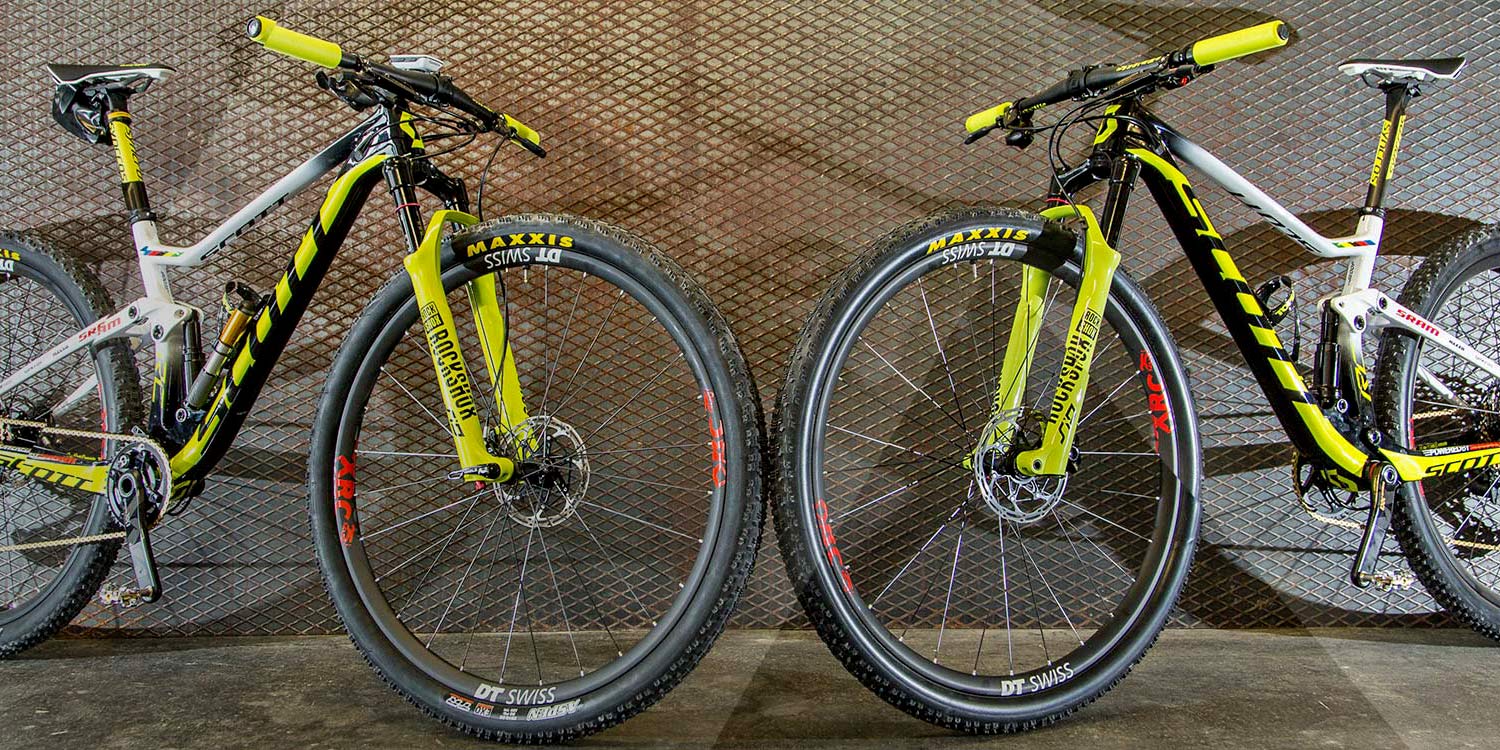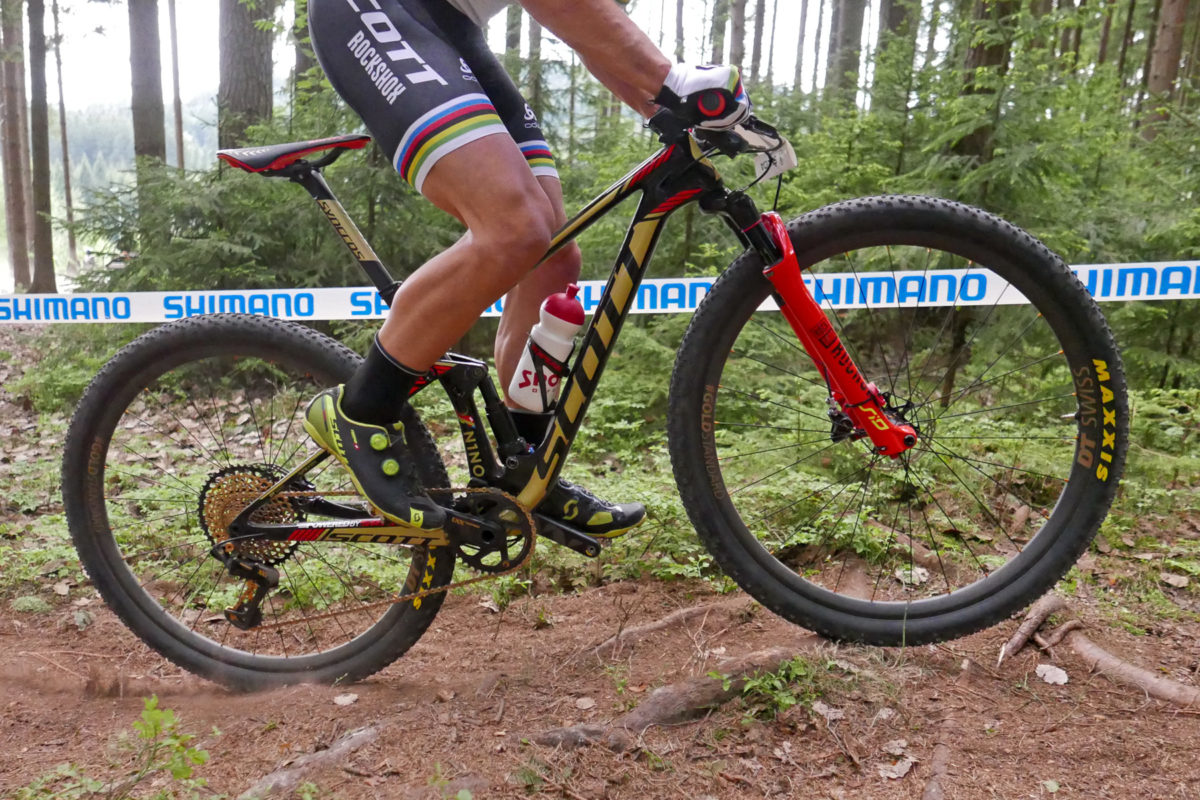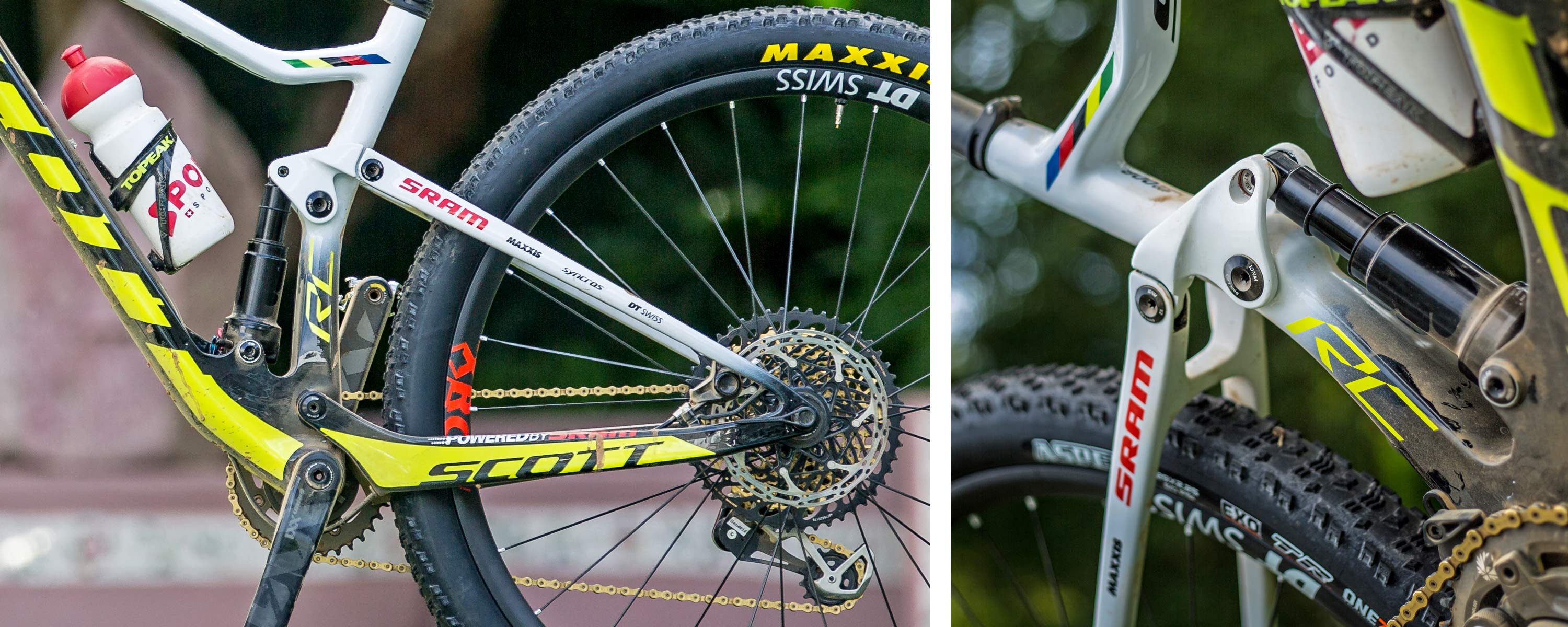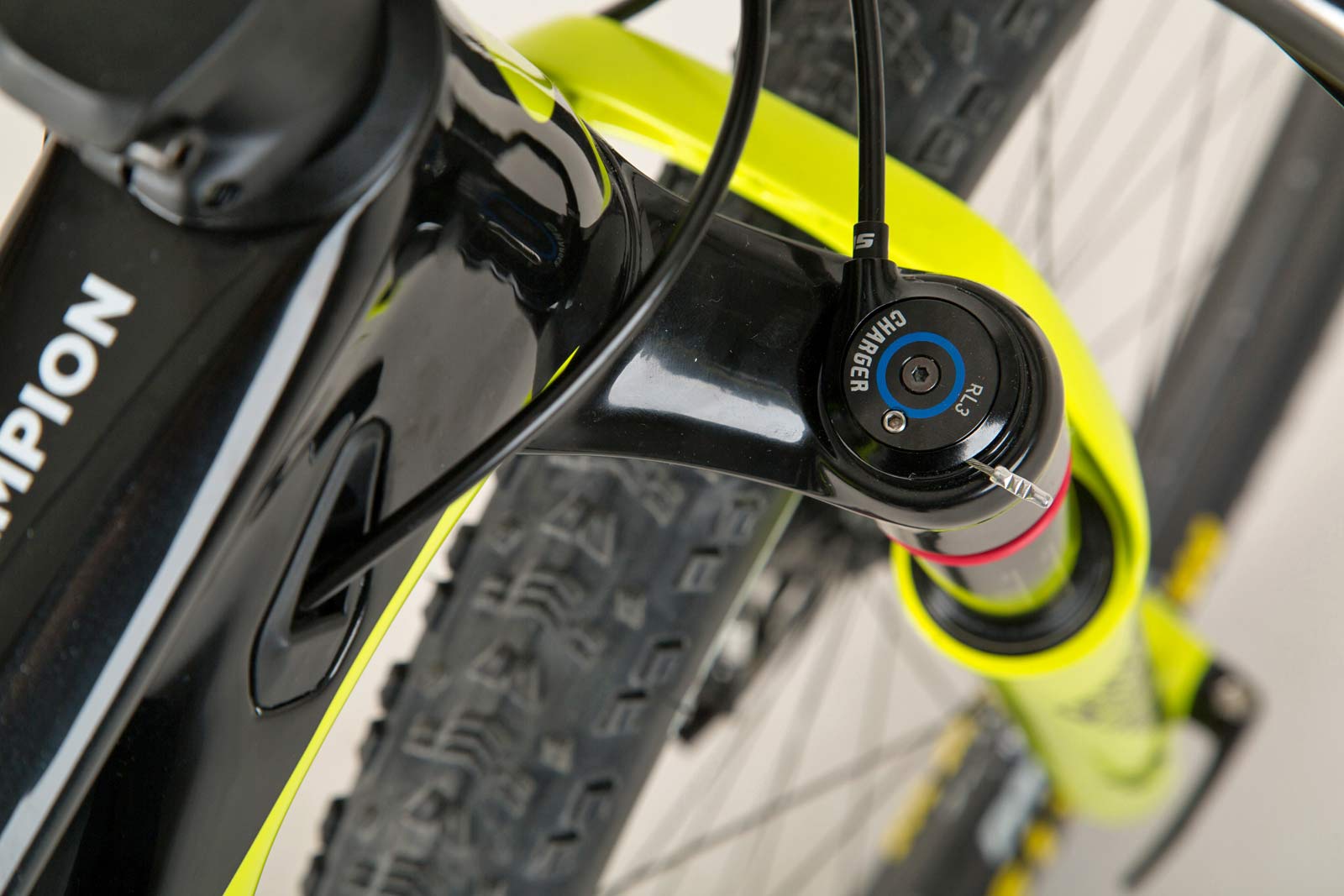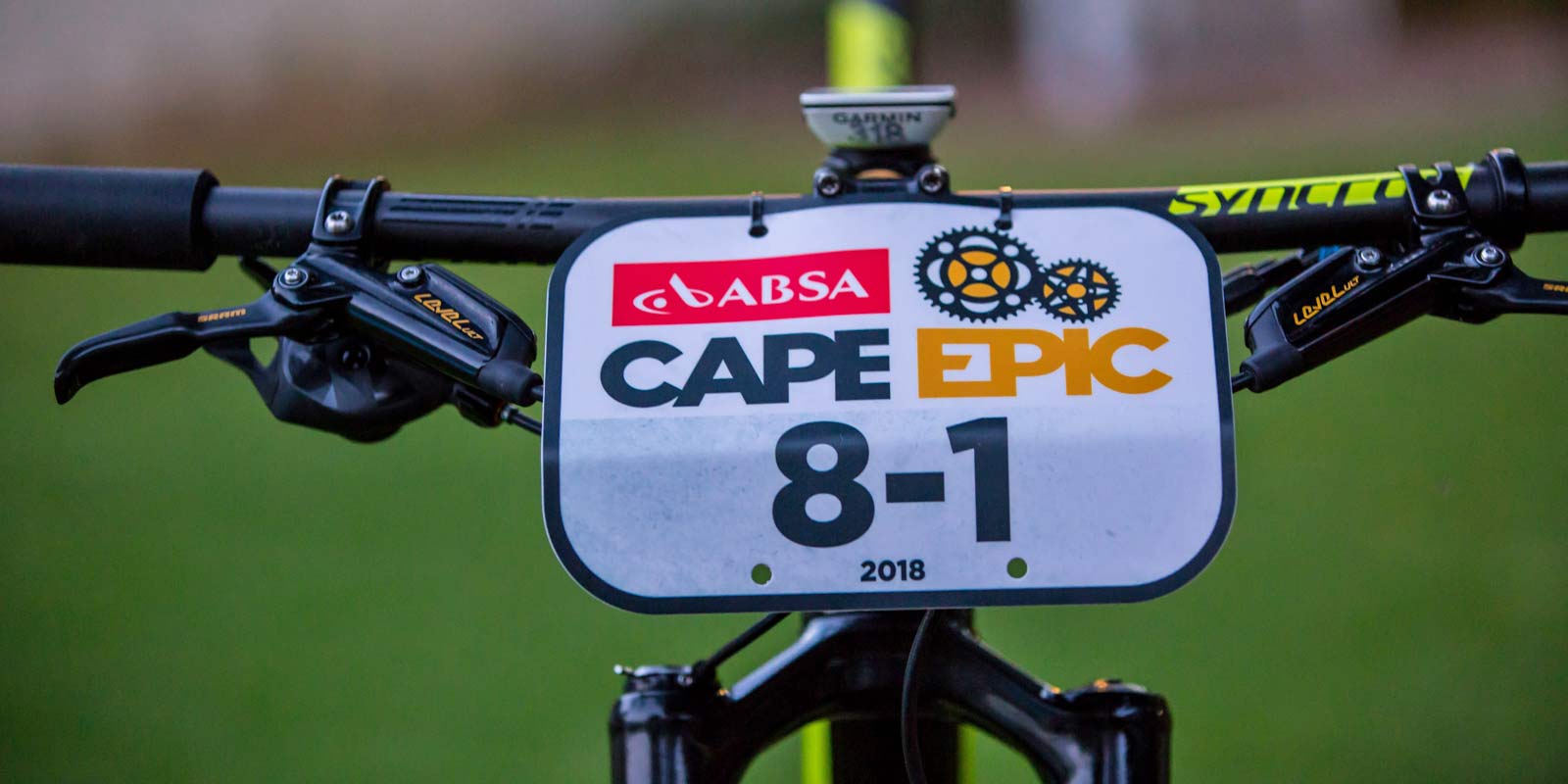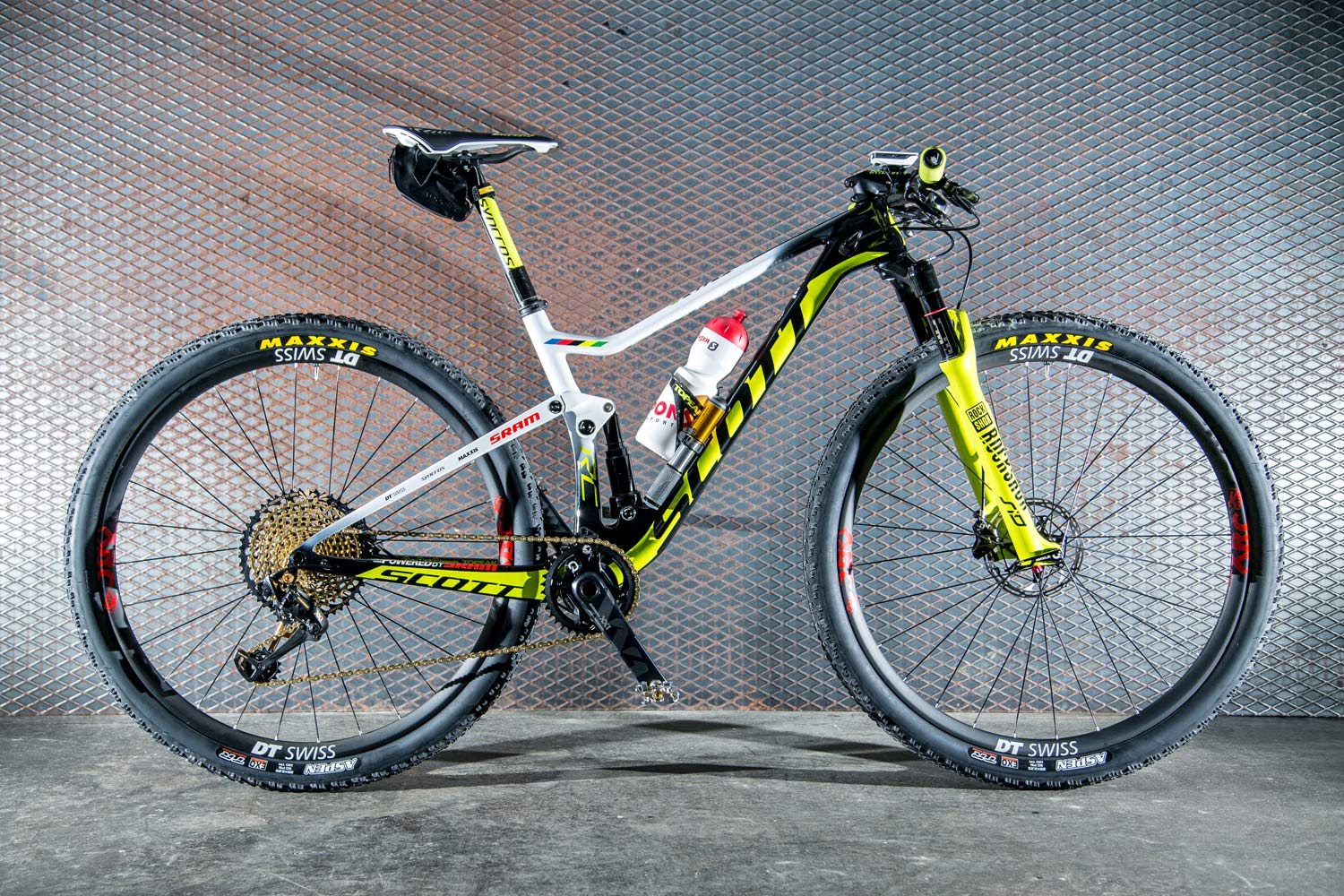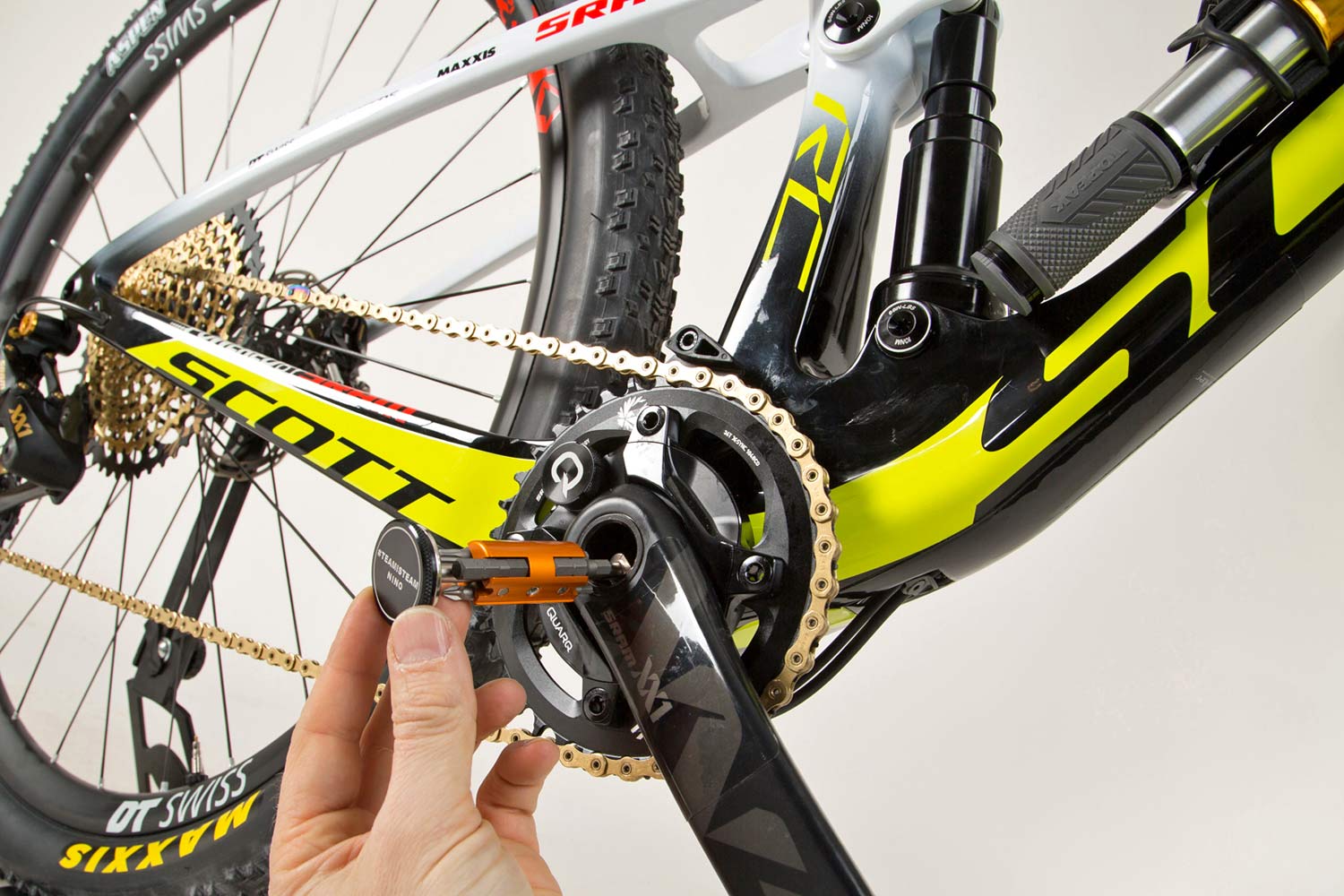This week we are going to look at the suspension of just one bike – tailored for two different types of mountain bike racing. More specifically, we’re focusing on two almost, but not identical bikes of the same rider – XC World Champion Nino Schurter’s Scott Spark RC – and how his pro mechanic Yanick Gyger tunes each for either the short form of 90 minutes of World Cup XCO racing or the 8-day, 658km stage race marathon of an event like the Cape Epic.
We’ve actually detailed Nino’s XCO race bike a number of times over the years. When he keeps winning World Championships and World Cups left and right, we want to see what gets him there. Plus, when you are the world’s best XC mountain biker, companies like SRAM are likely to sneak prototypes onto your bike like the next gen eTap Eagle wireless electronic mountain bike drivetrain. But today we are talking suspension, so lets stick to those Black Box RockShox SID forks and unmarked custom Fox(?!) shocks…
What suspension is Nino racing to start with?
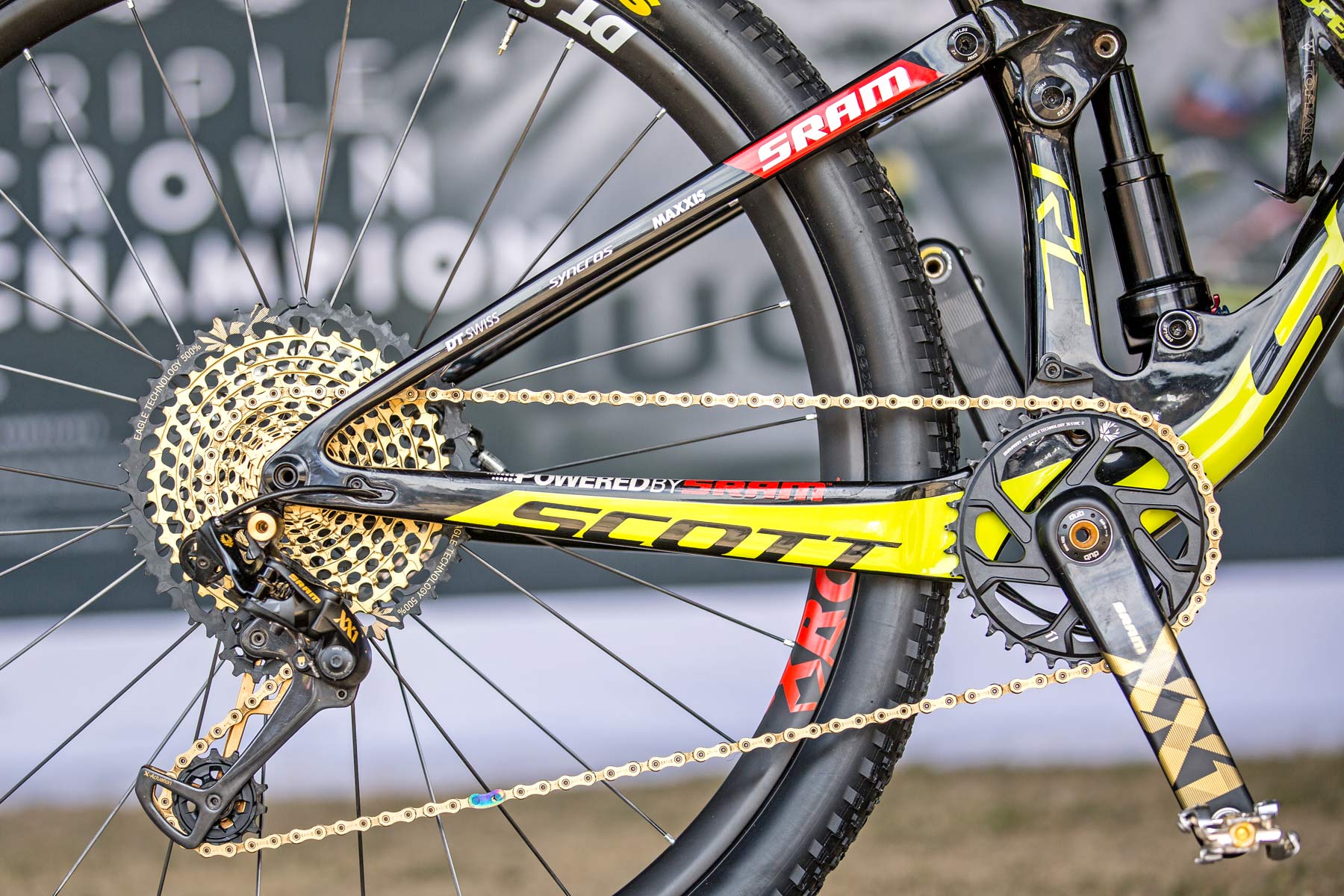
Swiss rider Nino Schurter has ridden for many years on Scott full suspension bikes, and for the last few seasons has made the move to RockShox suspension (from years on DT Swiss suspension) on his Scott Spark RC 900 thanks to title sponsorship of his Scott-SRAM team. The latest Spark RC uses a metric sized Trunnion mount shock, and extends the shock body down between two lower mounting tabs. This allows for a greater shock stroke for the same eye-to-eye length in a compact frame design, and neat integration of internally routed remote lockout controls.
So far, sponsor SRAM’s RockShox Deluxe shocks do not yet fit in between these lower mounts with a remote, so Nino is running an unbranded shock (as are his teammates, which appears to be a Fox Float.) The team calls it a “custom 3-mode rear shock” which corresponds to the Open, Medium & Firm modes of the Performance level Float DPS. Although even then, Nino’s shock does have a slightly different control configuration with a red rebound lever and a blue compression dial operated by the remote.
Fork-wise the bike uses a more standard 100mm RockShox SID World Cup Carbon RL3 Charger fork, but it still gets a Black Box designation to hide some unique tuning inside.
What does Yanick the Mechanic do differently for shock setup?
Both XCO & Cape Epic bikes share the exact same HMX carbon Spark RC 900 frame, as well as that same RockShox fork & unbranded shock. Looking at both bikes, there are very few obvious differences outside of some accessories getting strapped on.
But inside the suspension Yanick adjusts the setup differently to cater to the multi-time World Champ’s stage racing preferences. Nino prefers several psi less air pressure and more sag in the stage-racing setup for improved suppleness over the repeated small bumps. This helps keep him fresh for repeated long days on the bike (especially in the fork preventing sore shoulders) but brings with it a degree of risk for the few points on the Cape Epic when the terrain gets especially steep and technical. To combat that, the team adds a couple of tokens into the fork that lower the air volume and produce a more progressive feel towards the end of the stroke, while retaining the small impact sensitivity.
How do other setup differences impact suspension performance?
No other direct suspension updates are used, but a number of small changes still impact the overall system suspension performance. For the Cape Epic Nino and company run heavier Maxxis Aspen 29 x 2.25″ 120tpi EXO TR tires that have with more sidewall protection to prevent the most common flats in the long race. The heavier tires are stiffer and less supple to damping small bumps, so actually are an even bigger reason to lower fork & shock pressures a few more psi. To keep small puncture protection up, the stage race team also doubles up on sealant to 80ml per tire.
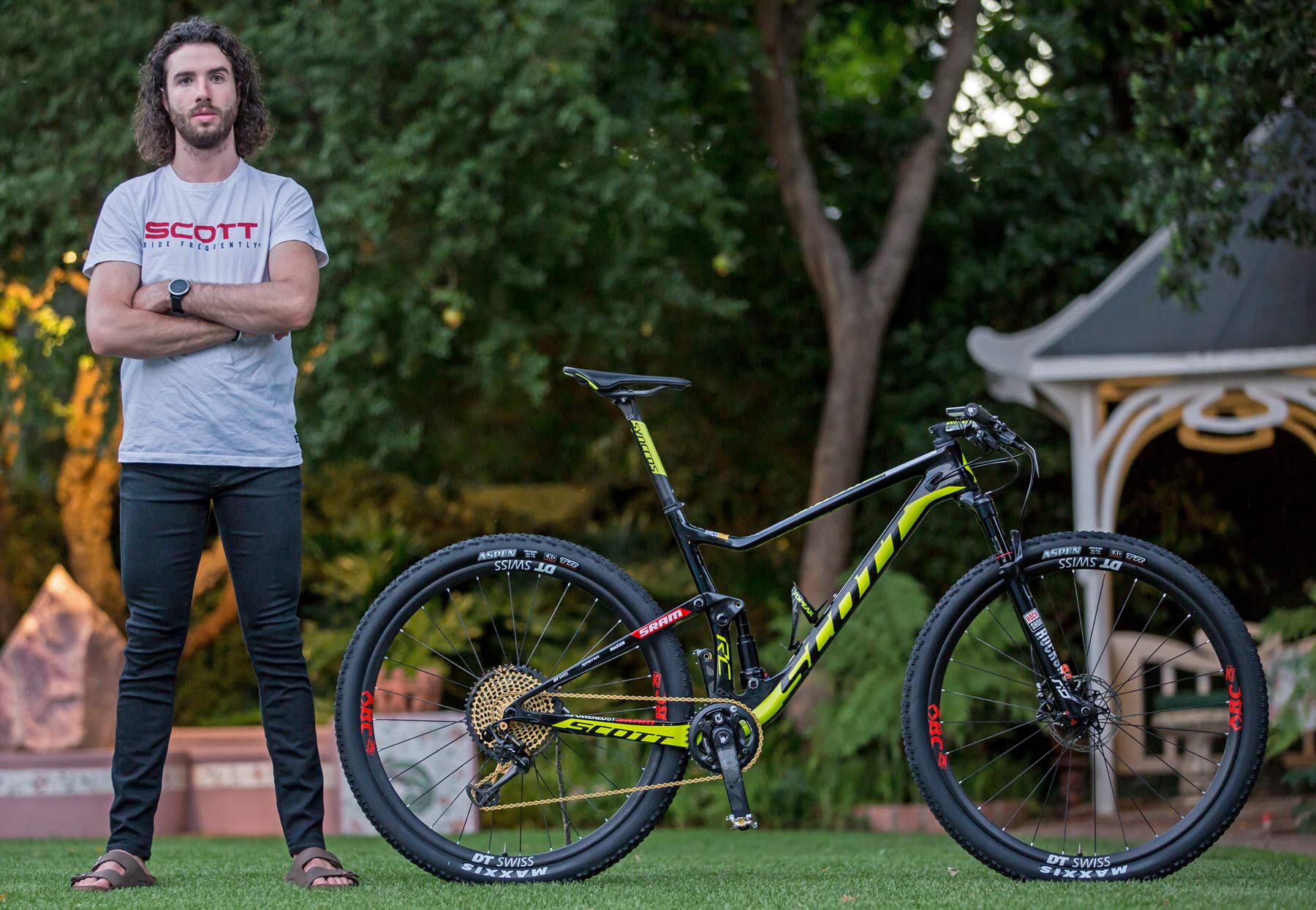
Other than that there are a number of other add-ons that creep up the overall bike weight. Add in sometimes heavier (but still light carbon) wheels; a Quarq XX1 power meter to gauge the multi-day effort; tools like the Sahmurai SWORD tubeless plugs, integrated multi-tool in the BB spindle & Topeak Race Rocket MT pump; spares like an extra quick chain link, spare inner tube & duct tape patch wrap; even the move to a 700ml bottle vs. the 500ml version they’ll use in the World Cup. Those all seem like small issues, but they add up to a more than 1kg extra. While that wouldn’t impact my own bike much, Nino’s XCO bike weighed just 9.8kg when we weighed it last, immediately after winning in Nové Město last year. So an extra 10% in weight means the mechanics have to see how that affects air can pressures, and even damping settings…
For a full breakdown of what it takes to race and win XCO races and then head to the Cape Epic and stamp your name there as well, head over to the write-up Scott-SRAM put together on their website.
The fun never ends. Stay tuned for a new post each week that explores one small suspension tech, tuning or product topic. Check out past posts here. Got a question you want answered? Email us. Want your brand or product featured? We can do that too.
